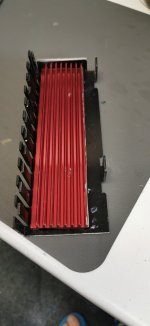They are very closeThe problem is that the caps are next to the regulators (trannies) , and the heat from them dries out the caps. 😉
convert it to Lateral FETS.
Interesting. In the early 80ies built quite a few clones with various improvements, mostly in the PS . Cannot see how lat fets would address the weakest features of the 3020: bass and dynamics.
@analog_sa
well the last one i did certainly improved the sound,IMO anyway, and ive listened to alot of these as ive repaired them over the last couple of years
I certainly appears to make the sound 'cleaner'
I agree some can sound 'wooly', but they all seem a bit different to me everytime i listen to one
certainly not as good as the 3103 IMO, the tone on those is realy good, again IMO.
and its all down to the individuals ear as well i guess
well the last one i did certainly improved the sound,IMO anyway, and ive listened to alot of these as ive repaired them over the last couple of years
I certainly appears to make the sound 'cleaner'
I agree some can sound 'wooly', but they all seem a bit different to me everytime i listen to one
certainly not as good as the 3103 IMO, the tone on those is realy good, again IMO.
and its all down to the individuals ear as well i guess
I always thought these NADs had small main capacitors,
Our first mod to these was running some wires out the bottom and attaching 2 really big (the size of a BIG can of Arizona Ice Tea, 100k µF total[?]), crude but effective, made a serious improvement.
dave
Probably a good reason why. 😉I've never seen anything like that before.
jeff
I'll be diplomatic and reserve judgement 🙂 I think I would want to test it first.
You could rig up a transistor on a heatsink and power it from a variable PSU adding a resistor from C to B to turn it on a bit. When you have a voltage and R value that generates some heat try adding a layer of that padding and see if the heat is transferred very quickly to the heatsink.
You could rig up a transistor on a heatsink and power it from a variable PSU adding a resistor from C to B to turn it on a bit. When you have a voltage and R value that generates some heat try adding a layer of that padding and see if the heat is transferred very quickly to the heatsink.
I think you should... not that I know anything about that stuff... but I really really think you should,
I'd tend to dig around for a total thickness of 3mm copper and/or aluminium 🙂
- Home
- Amplifiers
- Solid State
- Last, but (hopefully) best ever modified and complete NAD 3020
